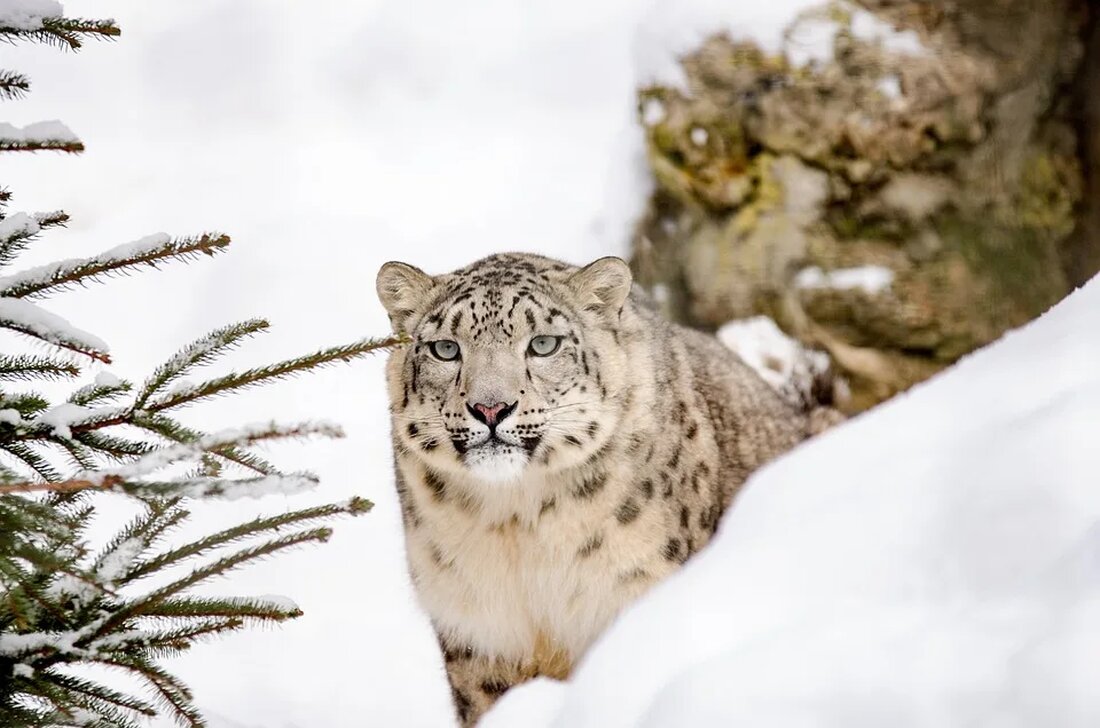Snow leopards: top predators of the high mountains
Introduction In the remote and brittle high mountains of Asia, snow leopards (Panthera uncia) assert themselves as top predators in a demanding habitat. With their unique adaptability and abilities, they establish the high mountains as their own territory. In this article we take a closer look at these magnificent big cats, their lifestyle and the fight to preserve them. Physiological Adaptations Body Structure and Coat Snow leopards have developed an impressive ability to adapt to the unrelenting cold and harsh terrain of the high mountains. They have a compact body with short legs and a long, thick tail, which can be used both as a balancing aid when navigating steep terrain and as an additional...

Snow leopards: top predators of the high mountains
Introduction
In the remote and brittle high mountains of Asia, snow leopards (Panthera uncia) assert themselves as top predators in a demanding habitat. With their unique adaptability and abilities, they establish the high mountains as their own territory. In this article we take a closer look at these magnificent big cats, their lifestyle and the fight to preserve them.
Physiological adaptations
Body structure and fur
Snow leopards have developed an impressive ability to adapt to the unrelenting cold and harsh terrain of the high mountains. They have a compact body with short legs and a long, thick tail that serves as both a balancing aid when navigating steep terrain and as an additional source of warmth by wrapping it around their body. They are equipped with a dense, woolly fur that thickens to up to 5 cm in winter and serves as an insulating layer against the cold temperatures. The underside of their body even has fur up to 12 cm long.
Paws and eyes
The snow leopard's paws resemble natural snowshoes and prevent them from sinking into the snow. The longer hair on their underside makes them appear even larger and offers an expanded surface area to better distribute the cat's weight. Regarding their eyes, snow leopards are equipped with a pronounced tapetum lucidum, a layer-like structure behind the retina that reflects incoming light and increases their ability to see in low light conditions.
Diet and hunting behavior
Diverse loot
As an apex predator, snow leopards play an important role in their ecosystem. Their prey list is diverse and includes wild sheep and goats, small mammals such as marmots and hares, as well as birds and in some cases even insects and grass. The main source of food, however, are the two ungulate species, blue sheep and Argali wild sheep.
Hunting strategy
Snow leopards are opportunistic hunters and use both lurking and hide hunting to bring down their prey. These big cats are masters of camouflage and use their mottled gray fur to hide in the rocky Alps. They approach their prey stealthily and launch a rapid attack, often from a distance of over 20 meters.
Reproduction and life cycle
Snow leopards reach sexual maturity at around two to three years of age and the mating season usually takes place between January and mid-March. After a gestation period of around 90 to 100 days, the female gives birth to one to four young in a protected rock niche. The young animals open their eyes after about a week, but remain in their natal cavity until they are two months old.
Threats and Conservation Efforts
Despite their adaptability and ability to survive, snow leopards today face numerous threats, including poaching, habitat loss and climate change. Their fur, bones and other body parts are highly sought after on the illegal black market. Destruction and fragmentation of their habitat by human activities is another major threat that has decimated the snow leopard population in some regions.
Conservation efforts
Several initiatives have been launched to save snow leopards. The International Union for Conservation of Nature (IUCN), the World Wildlife Fund (WWF) and the Snow Leopard Trust are just some of the prominent organizations working to protect these magnificent big cats. They carry out evidence-based conservation work and raise awareness of the threat to snow leopards.
conclusion
Despite their abilities and adaptations to the harsh conditions in the high mountains, snow leopards are still an endangered species. Their observation and study represent a major challenge for biologists and conservationists. Ultimately, the survival of these remarkable big cats depends critically on the conservation measures taken to combat the threats they face.

 Suche
Suche
 Mein Konto
Mein Konto
